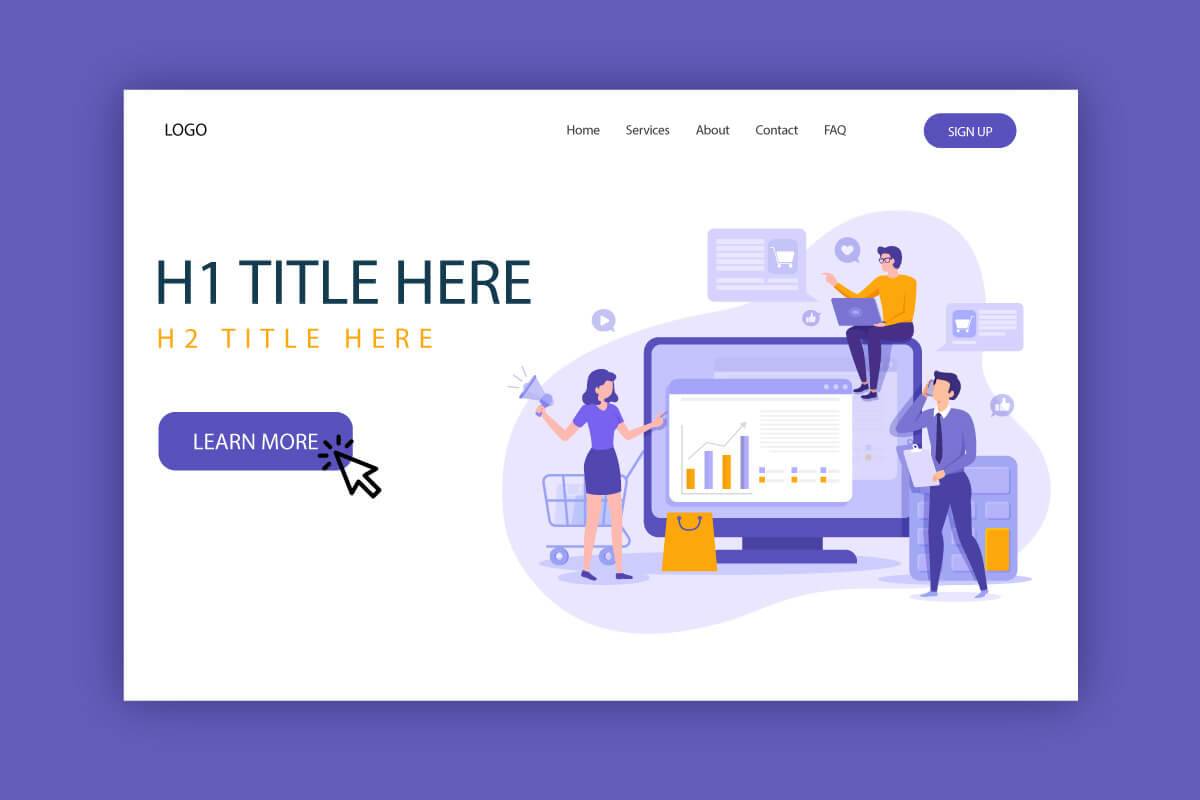How to Create an Effective Call to Action (CTA) for Your Website
A call to action (CTA) is essential in SEO web design to generate website conversions. Whether you’re promoting affiliate offers, selling products or capturing leads, you must compel visitors to take action. A CTA is a brief message — typically in image format — that instructs visitors to take this action. With an effective CTA, more visitors will take the necessary action on your website to generate a conversion.

Begin With a Verb
Consider using a verb at the beginning of your CTA. Verbs, of course, convey an action. By using a verb in your CTA, you can tell visitors what they do should next. Visitors will see the verb, after which they may perform the action it conveys. All CTAs can drive conversions, but those beginning with a verb typically have the highest click-through rate (CTR) and generate the most conversions because they instruct visitors on what to do next.
The Top 10 verbs used at the beginning of a call to action include:

- Visit
- Discover
- Download
- Find
- Learn
- Request
- Contact
- Sign up
- Subscribe
- Shop
Instill Urgency
For improved conversion performance, instill a sense of urgency in your call to action. You don’t want visitors to ponder whether to take the conveyed action. Rather, you want them to act immediately. If a visitor leaves without taking action, he or she may not come back. Instilling urgency in your CTA encourages visitors to act immediately.
You can instill urgency in your CTA by ending it with “now” or “today.” Alternatively, if you’re creating a CTA for a limited-time offer, you can show a countdown timer next to it. As the timer ticks down, visitors may feel the urgent need to take action so that they don’t miss the promoted deal or offer.
Use a Bright Color
Designing your CTA in a bright color can lead to more conversions. When split testing a red CTA and a green CTA, HubSpot found that the former color improved conversions by 21 percent. SAP conducted a similar study involving CTAs. According to SAP, orange CTAs improve conversions by over 32 percent compared to darker-colored CTAs.
With a bright color, your CTA will attract the attention of visitors. Bright colors are attention-grabbing. Visitors will fixate their eyes on bright elements of your website, including the CTA. Keep in mind, though, that you’ll need to use a different color for its embedded text. You can’t design the embedded text in the same or similar color as the rest of your CTA. To make it easy to see and read, you must design the embedded text in a contrasting color.
If your CTA is red or orange, you can design the embedded text in white. White text against a red or orange background looks clean and crisp, making this color combination effective for CTAs.
Go Big
Size matters when creating a call to action. If it’s too small, it will be overshadowed by the other content on your website. The surrounding text and images will drown out the CTA, resulting in fewer clicks and fewer conversions. Small CTAs can also be difficult for visitors to select. If a visitor is using a mobile device, he or she may struggle to tap a small CTA.
Don’t be afraid to use a large size for your CTA. It shouldn’t extend past beyond the boundaries of the content container, but you can still make your CTA large. A large oval- or rectangular-shaped CTA will grab visitors’ attention while subsequently boosting clicks and conversions.
Surround With Whitespace
A CTA is only effective at driving conversions if it’s easy for visitors to see. If it blends into your website, visitors may overlook it. Fortunately, you can increase your CTA’s visibility by surrounding it with whitespace.
Contrary to its name, whitespace can be any color. Whitespace is simply blank space that’s not being used. It doesn’t contain text, images or other visual elements. Whitespace is barren space consisting of any single color. By surrounding your CTA with a lot of whitespace, visitors will focus it on rather than other visual elements.
Place at the Top or Bottom
In addition to surrounding it with whitespace, placing your CTA at the top or bottom of your website can increase its visibility. A middle-of-the-page placement usually yields the poorest performance for CTAs. When visitors view a page, they’ll often scroll down while skimming the text for important words. If your CTA is in the middle, some visitors will inevitably overlook it.
A top-of-the-page placement means all visitors will see your CTA when they initially load your website. On the other hand, placing your CTA at the bottom gives you the opportunity to warm up visitors. If your CTA is at the bottom of the page, you can precede it with sales copy that further entices visitors to take action. Test both positions for your CTA to determine whether the top or bottom works best.
All conversions begin with some form of on-page action. You can’t generate a conversion from a visitor until he or she takes action. By creating an effective call to action, more visitors will take action, and ultimately increase your overall content marketing efforts and your website’s conversions.










